#B2B AI solutions
Explore tagged Tumblr posts
Text
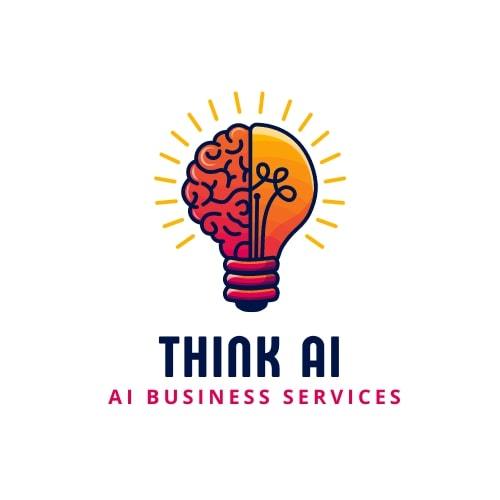
Think AI: Unlocking Business Potential with Advanced AI Solutions
Think AI is an innovative company that empowers both B2B and B2C businesses by utilizing cutting-edge artificial intelligence solutions. By integrating AI into business models, Think AI helps companies boost profitability, reduce operational costs, and gain a competitive edge. Their AI-driven strategies are tailored to streamline operations, enhance customer engagement, and optimize decision-making processes, ensuring businesses thrive in a rapidly evolving digital landscape. Visit: https://www.thinkai.co.uk/
1 note
·
View note
Text
Healthcare Industry with Custom AI Software Development - SSTech System

We are living in an era of technology. By glancing around, it is obvious that technology has affected every inch of our lives. Artificial Intelligence (AI) is the contemporary technological trend. It is reshaping the entire landscape. Healthcare is no exception. AI Software Development of today is having a great influence on how medical care is delivered nowadays.
AI-driven web development has brought a very important change in the way patients are diagnosed. It has not only changed the way doctors diagnose and treat patients but also how patients manage their health. Custom AI software development truly has been revolutionized as the game-changer. It also provides a good foundation for creativity and saving.
Would you like to find out about the ways AI is transforming the healthcare sector?If yes, read on! In this article, we are going to expose the way AI is changing healthcare.
AI & Healthcare Web Development
AI in Healthcare can be a very effective option of efficient healthcare. It can empower the healthcare sector more than ever before. It improves medical outcomes. This adds to the fact that it improves operations and results in cost and time savings. Well, it is not just a passing fad, but it is a trend that will remain forever.
According to data, the worldwide AI market is poised for remarkable growth. It is set to grow at an anticipated compound annual growth rate (CAGR) of 37.3% between 2023 and 2030. By 2023, it is expected to soar to a staggering $1,811.8 billion, showcasing the immense potential and rapid expansion of the AI industry.
With the emergence of AI, healthcare businesses are quickly shifting to custom AI software. It empowers them to make the best of the power of AI tailored. They can tailor the solutions as per their unique requirements.
Are you also planning to level up your healthcare business? If so, AI software development can be beneficial. Wondering how? Let’s move to the next section, where we will tell you some key benefits of custom AI software development.
Benefits Of Custom AI Software Development
AI is growing massively. It has impacted businesses across sectors. If we talk about Healthcare, AI has made things super easy. Below are some key benefits of AI software development:
Enhanced diagnostic accuracy:
Custom AI solutions for your healthcare business enable to make the analysis of large amounts of medical data. It is also able to analyze patient records, laboratory results, and imaging scans.
This however is not the only advantage; AI algorithms are also able to uncover patterns. Moreover, it can recognize abnormalities which human eyes may miss. Generally, this brings about better diagnoses and prompts treatment.
Personalized treatment plans:
AI-driven insights assist healthcare professionals in the creation of individualized treatment plans. They may personalize medical solutions to patients’ needs. It harnesses patient data, genetic information, and treatment history. It assists in suggesting tailored strategies.
Improved operational efficiency:
AI-enabled automation decreases clerical duties. For instance, it assists with appointment scheduling, billing, and inventory management. Thus, they can devote more time to patient care. It also helps in the integration of AI into the existing workflow. It will increase efficiency and productivity in the organization as a whole.
Predictive analytics:
AI has the superior predictive power. Developing AI healthcare software can pre-empt disease outbreaks, anticipate bed demand, and identify high-risk patients. It allows for proactive planning and resource allocation. AI algorithms can furnish strategic decision-makers with actionable insights to guide strategic decision-making and resource planning.
Enhanced patient engagement:
AI-driven chatbots and virtual assistants are always on standby to extend support to patients. It answers their questions anytime. Moreover, it provides medication reminders, as well as tailored health suggestions. You can hence build an AI chatbot and integrate it into websites and applications.
We have seen how AI can improve healthcare. However, are you aware of the common AI applications in the healthcare industry? Let’s find out!
Custom AI Solutions for Healthcare
AI can be used in multiple ways. Here, we have listed down some typical custom AI solutions in the medical industry:
AI-enabled diagnostics:
Custom AI algorithms can analyze medical images. It helps radiologists in X-rays, MRIs, and CT scans in detecting abnormalities and identifying disease. AI-powered diagnostic tools offer rapid and accurate results.
Predictive analytics:
Custom AI models can analyze electronic health records (EHRs). It also allows for demographic data, and environmental factors to predict disease trends, identify at-risk populations. With predictive analytics, healthcare providers can intervene proactively.
Remote patient monitoring:
Custom AI software enables remote monitoring of patients with chronic conditions. AI algorithms can analyze real-time data from wearable devices, sensors, and IoT devices to detect deviations from normal parameters and alert healthcare providers to potential issues. It enables timely interventions and preventing complications.
Drug discovery and development:
Custom AI solutions accelerate the drug discovery process by analyzing vast datasets, simulating molecular interactions, and predicting drug efficacy and safety profiles. AI-driven drug discovery platforms expedite the identification of promising drug candidates, reducing costs and time-to-market for new therapies.
AI Software Development Tools
Well! When it comes to AI software development tools, you get a variety of options. Here, we have noted the most important tools that can make a positive difference for your business:
Machine learning libraries:
Tools such as TensorFlow, PyTorch, and sci-kit-learn provide potent frameworks for developing custom AI models tailored to healthcare applications. These libraries offer a wide range of machine-learning algorithms and tools for data preprocessing, model training, and evaluation.
Natural language processing (NLP) tools:
NLP frameworks like spaCy and NLTK enable the development of AI-driven chatbots and virtual assistants for healthcare applications. These tools support text processing, sentiment analysis, and language understanding, facilitating the creation of conversational interfaces for patient engagement and support.
Deep learning platforms:
Deep learning frameworks such as Keras and MXNet offer advanced capabilities for developing custom AI models, including convolutional neural networks (CNNs), recurrent neural networks (RNNs), and generative adversarial networks (GANs). These platforms empower healthcare organizations to leverage state-of-the-art deep learning techniques for image analysis, natural language processing, and predictive modelling.
Custom AI software development has become crucial for businesses. Professional AI/ML developer helps in unlocking the full potential of AI by providing the best-in-class custom healthcare software development services for the healthcare industry.
With AI revolution in healthcare lets you enhance diagnostic accuracy, personalize treatment plans, improve operational efficiency, and empower patients to take control of their health. SSTech System a professional AI software development company, the future of Healthcare holds great potential for innovation, efficiency, and improved patient outcomes.
Final words
AI software development services for healthcare are no less than a paradigm shift in medical technology. It allows for a smarter and more efficient way of medical care and healthcare app development. If you are also a healthcare business and looking to integrate AI into your healthcare business, it is time for you to go professional. So what are you waiting for? Hire AI developers today and take your business to new heights.
#AI Solutions for Healthcare#Hire AI developers#AI software development#software development#sstech system#healthcare industry#Custom AI software#Healthcare Web Development#healthcare#b2b
2 notes
·
View notes
Text
AI Lead Enrichment and Intelligent B2B Lead Generation Solutions
Artificial intelligence (AI) is reshaping the way businesses approach lead generation and management, offering innovative solutions for improving efficiency and effectiveness. By utilizing AI-powered lead generation and data enrichment solutions, sales teams can focus on high-quality prospects and close deals faster, enhancing overall business performance.
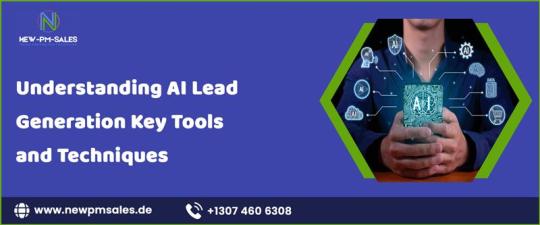
AI Lead Enrichment
AI lead enrichment is a transformative process that enhances raw lead data by supplementing it with relevant, up-to-date information. This process enables businesses to gain deeper insights into potential customers, including their preferences, behaviors, and needs. With enriched data, sales teams can craft personalized strategies to engage prospects and increase conversion rates.
AI-Powered Lead Generation
AI-powered lead generation tools are revolutionizing the way businesses identify and target potential customers. By analyzing vast amounts of data, AI can uncover hidden opportunities and identify high-potential leads. These tools leverage predictive analytics to assess the likelihood of prospects converting into customers, ensuring that sales efforts are focused on the most promising opportunities.
Data Enrichment Solutions
Data enrichment solutions powered by AI play a critical role in maintaining the accuracy and relevance of customer data. These solutions integrate various data sources, including social media profiles, public records, and online behaviors, to provide a comprehensive view of prospects. Accurate and detailed data allows sales teams to make informed decisions and tailor their outreach efforts effectively.
Intelligent Lead Scoring
Intelligent lead scoring is a game-changer for prioritizing leads. AI algorithms evaluate prospects based on a variety of factors, such as engagement levels, demographics, and past interactions. By assigning scores to leads, sales teams can focus their efforts on those with the highest potential for conversion. This targeted approach boosts efficiency and maximizes the return on investment.
AI for Sales Teams
AI offers numerous benefits for sales teams, from automating routine tasks to providing actionable insights. By leveraging AI, sales teams can streamline workflows, improve collaboration, and enhance decision-making. Tools like AI-powered CRM systems and predictive analytics enable teams to focus on building relationships and closing deals, rather than getting bogged down by administrative tasks.
B2B Lead Enrichment with AI
B2B lead enrichment with AI is particularly impactful for businesses operating in the complex world of B2B sales. AI tools can analyze company data, industry trends, and market conditions to identify key decision-makers and their specific needs. This detailed information empowers sales teams to craft customized solutions and establish meaningful connections with potential clients. In conclusion, AI is a powerful tool for enhancing lead generation and management processes. From AI-powered lead generation and data enrichment to intelligent lead scoring and sales team support, these technologies are transforming the sales landscape. By adopting AI-driven strategies, businesses can achieve greater efficiency, improve customer engagement, and drive revenue growth in an increasingly competitive market.
#AI Lead Enrichment#AI-Powered Lead Generation#Data Enrichment Solutions#Intelligent Lead Scoring#AI for Sales Teams#B2B Lead Enrichment with AI
0 notes
Text
How Can AI Tools Enhance Your Sales Today?
If you want to unlock your local business opportunities then Flow leads help grow your business sales with AI Enhanced Sales Tool. Our AI empowers your team to close deals faster, boost efficiency and drive unprecedented growth.

#Ai Enhanced Sales Tool#Ai Solution Industry Sales Problem#Ai Tool Sales#Ai Tool To Generate Leads#B2b Business Leads#B2b Sales Leads#Best Ai Sales Tool
1 note
·
View note
Text
Top 50 Leadership Interview Questions to Ask Candidates (simplifyvms.com)
Discover the top 50 leadership interview questions to assess candidates' skills, decision-making, and management style. Perfect for finding the right leader for your team.
#contingentworkforce#directsourcing#vendor management solutions#vendor management tools#vendors#vms#talentacquisition#vendor management software#vendormanagement#procurement#software#technology#workforce#management#recruitment#leadership#b2b#b2b services#growth#success#integration#applicant tracking system#ai#vms software
0 notes
Text

AI solutions for digital marketing by Langoor AI
In the era of AI revolution, Langoor provides perfect AI solutions for brands. The AI based digital marketing services from Langoor can be segmented into three types, namely, Diagnostic AI, Generative AI and Predictive AI. Langoor has a team of AI technology experts who can provide customized solutions on different industries. We use the most advanced paid AI tools. For your business query, talk to us by visiting our website.
Website: https://langoor.ai/
#langoor ai#ai in marketing#ai in digital marketing#langoor ai solutions#ai solutions#ai for b2b businesses#ai for b2c businesses#ai tools
0 notes
Text
UK based Sokin secured $31 M funding from Morgan Stanley. It offers services to 500 businesses across different verticals across the globe. Sokin is a global cross border payment provider that empowers businesses to manage payment swiftly, efficiently and transparently.
#finance#automation#technology#ai#uk#Sokin#payment gateway providers#startup#trendingnow#payment gateway integration#payment solutions#unified payments interface#online payments#b2b payments#digital banking solutions#digital banking#digital strategy#banking industry#fintech#vc#angel investment#angel investor#investing
0 notes
Text
An Insight into SaaS & BaaS: Revolutionizing Everything From Cloud to Cash
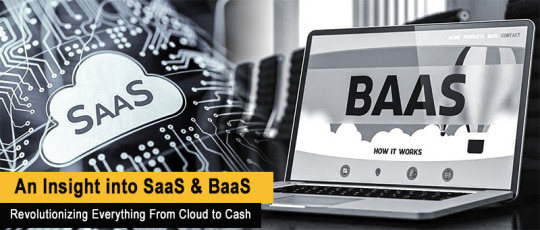
Digital transformation is no longer a buzzword. It has become a reality, a necessity. In this rapidly evolving technological landscape, businesses are tirelessly trying to remain agile, innovative, and customer-centric. In this endeavour, Software as a Service (SaaS) and Banking as a Service (BaaS) have emerged as powerful platforms, driving the next wave of the digital revolution.
What is SaaS?
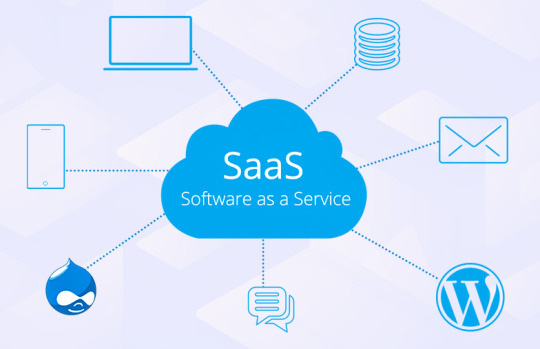
Software as a Service (SaaS), is a kind of cloud computing that provides users with access to software applications over the Internet. These applications are hosted on a cloud and managed by the service provider, relieving users from the need to install, manage, or update the software on their local servers or computers.
Why is SaaS the Future and Why is it Used?
The potential of SaaS stretches far beyond ease of use. By eliminating the need for hardware acquisition, provisioning, and maintenance, it significantly reduces upfront costs. Flexible payments make it an affordable solution for businesses of all sizes. It also provides scalable usage, allowing companies to scale up or down based on their requirements.
Moreover, automatic updates ensure users always have access to the latest features and security measures. Its accessibility from any internet-connected device makes it a perfect fit for today’s remote working culture. Given these advantages, it is no surprise that SaaS is being hailed as the future of software delivery.
SaaS Integration and the SaaS Business Model
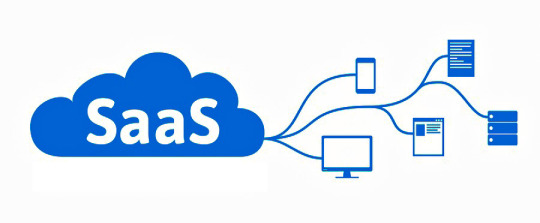
SaaS platforms are designed for seamless integration into the existing IT infrastructure. It enables businesses to focus on their core competencies, leaving software-related issues to the SaaS provider.
The SaaS business model primarily relies on subscription-based revenue, with clients paying a fixed amount periodically to access the service. This ensures a steady revenue stream for providers and makes budgeting easier for clients.
On-Premise Vs SaaS: Why SaaS is Superior?
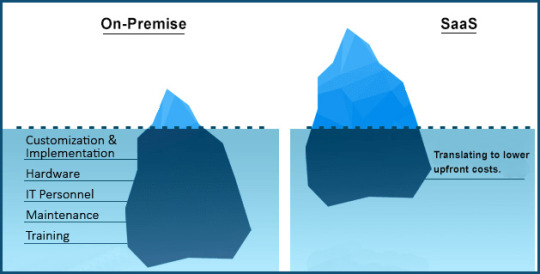
On-premise software comes with substantial initial costs, including hardware, software licenses, and installation, not to mention the ongoing costs of maintenance, updates, and IT staff.
SaaS, on the other hand, is subscription-based, translating to lower upfront costs. The fact that it is maintained by the service provider further eliminates the need for maintenance and IT staffing costs. Also, SaaS solutions are scalable, customizable, accessible from anywhere, and always up-to-date, making them the superior choice for most businesses.
SaaS Products and Companies we all know
The SaaS market is crowded with many players, each one offering its unique value proposition. Top global SaaS companies include Salesforce, known for its customer relationship management (CRM) software; Adobe, with its creative and multimedia software suite; Microsoft, offering a range of productivity tools and business solutions; and Google, with its robust G Suite of Office applications.
The Role of IaaS and PaaS along with SaaS
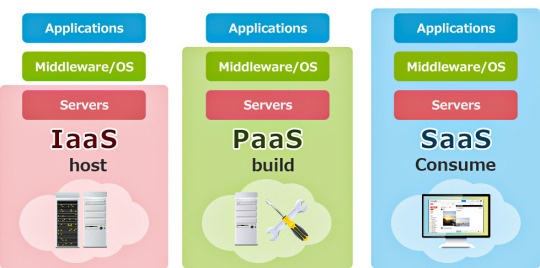
In the cloud computing realm, SaaS is one of the three primary service models, along with Infrastructure as a Service (IaaS) and Platform as a Service (PaaS).
IaaS virtualized computing resources over the internet. IaaS provides physical and virtual resources that are used to build a cloud. These resources include servers, network hardware, storage, and data center space. Users can rent these resources as per their needs, thereby saving on the capital expenditure that would have been incurred if they were to set up their own infrastructure. Amazon Web Services (AWS), Google Cloud Platform, and Microsoft Azure are some of the examples of Iaas.
PaaS delivers a platform for users to develop, run, and manage applications without the complexity of building and maintaining the infrastructure typically associated with application development. The PaaS provider manages the responsibility of housing the software and hardware components on their own infrastructural setup. As a result, developers can focus more on writing the code and the business logic, and less on managing hardware, software updates, and other routine IT management tasks. Examples of PaaS include Google App Engine, Heroku, and IBM Cloud Foundry.
SaaS delivers software applications over the web. IaaS provides virtualized computing resources over the Internet, and PaaS provides a platform for the creation and deployment of applications. Together, these models comprise the backbone of cloud computing, each serving distinct purposes but also complementing each other.
SaaS Uses in Different Sectors
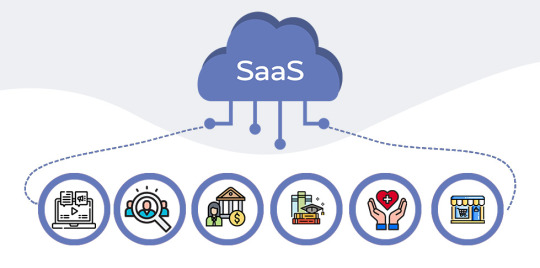
Digital Marketing
Marketing teams leverage SaaS to automate tasks, streamline workflows, create content and improve campaign effectiveness. SaaS tools assist in email marketing, social media management, customer relationship management (CRM), and various forms of analytical tracking. These tools enable marketers to measure campaign effectiveness, user engagement, and return on investment in real time.
Human Resource
HR professionals use SaaS for recruitment processes, streamline employee onboarding, assist in performance tracking, and even manage payroll. The advantage of these solutions lies in their ability to centralize data, allowing for seamless management and offering employees user-friendly self-service options. This promotes HR efficiency and boosts employee satisfaction.
Financial Sector
HR professionals use SaaS for recruitment processes, streamline employee onboarding, assist in performance tracking, and even manage payroll. The advantage of these solutions lies in their ability to centralize data, allowing for seamless management and offering employees user-friendly self-service options. This promotes HR efficiency and boosts employee satisfaction.
Education Sector
In education, SaaS facilitates online learning, course management, and collaboration among students and teachers. By providing extensive learning resources and a platform for interactive learning, SaaS tools enhance both teaching methodologies and the overall learning experience.
Healthcare
SaaS in healthcare provides numerous benefits, from improving patient care to optimizing operational processes. Electronic Health Records (EHR) systems, telehealth platforms, patient portals, and medical billing software are common SaaS applications in healthcare. They help streamline workflows, improve data accessibility, and ensure regulatory compliance.
Retail
In the retail sector, SaaS solutions offer a multitude of tools to improve both the customer experience and the retailer’s operations. E-commerce platforms, inventory management systems, Customer Relationship Management (CRM) tools, and analytics software are some of the SaaS solutions used in this sector. They help businesses optimize their supply chain, gain customer insights, and manage their online presence effectively.
What is BaaS?
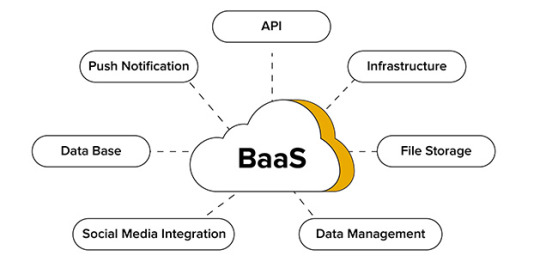
Banking as a Service (BaaS) is a model where financial services capabilities are provided over the Internet via APIs. With BaaS, fintech companies, retailers, and other businesses can integrate banking services into their own products, without the need to establish a full-fledged bank.
Why is BaaS the Future of Banking?
BaaS holds the promise of a more inclusive and innovative financial services sector. Enabling non-banks to offer financial services, encourages competition, promotes innovation and potentially leads to better services for consumers. As customer expectations evolve, the demand for integrated, seamless financial services will only grow, making BaaS an increasingly attractive proposition.
How Does BaaS Work and How is it Used?
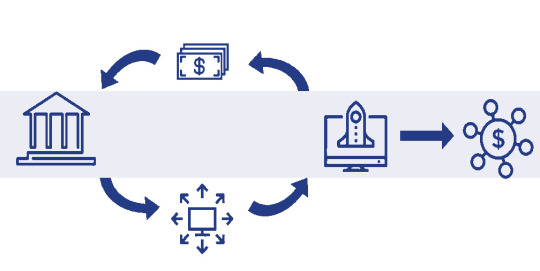
BaaS operates through APIs, which allow third parties to access banking services such as payments, transfers and account management on their platforms. Managed by a licensed bank, this infrastructure saves businesses from building complex banking functions from scratch.
Primarily utilized by fintech firms, BaaS facilitates services like digital wallets, payment gateways, and lending platforms. As we all know there is no finance without technology nowadays. This synergistic integration of existing platforms provides a smooth and convenient customer experience. Any business can leverage BaaS to integrate banking services, differentiate itself in the market, and enhance customer service.
BaaS Integration with Other Technologies
BaaS can be integrated with other technologies such as artificial intelligence, machine learning, and blockchain to offer advanced financial solutions. For example, AI can be used for personalized banking services, machine learning for predictive analysis in lending decisions, and blockchain for secure, transparent transactions. These integrations enhance the capabilities of BaaS platforms, opening up new paths for innovation.
The Intersection of SaaS and BaaS
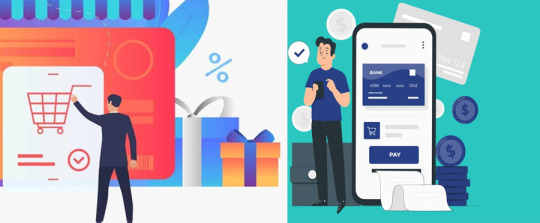
SaaS and BaaS are both service-based models, delivering…..
To read the full article: https://dsb.edu.in/an-insight-into-saas-baas-revolutionizing-everything-from-cloud-to-cash/?utm_source=tumblr&utm_medium=tumblr&utm_campaign=Saas+and+BaaS
#ai#jobs#india#blockchain#chatgpt#gpt 4#fintech#education#google#banking#saas#saas technology#saasmarketing#saas solutions#b2b saas#automation#baas#financial#investing#finance
0 notes
Text
☁︎。⋆。 ゚☾ ゚。⋆ how to resume ⋆。゚☾。⋆。 ゚☁︎ ゚
after 10 years & 6 jobs in corporate america, i would like to share how to game the system. we all want the biggest payoff for the least amount of work, right?
know thine enemy: beating the robots
i see a lot of misinformation about how AI is used to scrape resumes. i can't speak for every company but most corporations use what is called applicant tracking software (ATS).
no respectable company is using chatgpt to sort applications. i don't know how you'd even write the prompt to get a consumer-facing product to do this. i guarantee that target, walmart, bank of america, whatever, they are all using B2B SaaS enterprise solutions. there is not one hiring manager plinking away at at a large language model.
ATS scans your resume in comparison to the job posting, parses which resumes contain key words, and presents the recruiter and/or hiring manager with resumes with a high "score." the goal of writing your resume is to get your "score" as high as possible.
but tumblr user lightyaoigami, how do i beat the robots?
great question, y/n. you will want to seek out an ATS resume checker. i have personally found success with jobscan, which is not free, but works extremely well. there is a free trial period, and other ATS scanners are in fact free. some of these tools are so sophisticated that they can actually help build your resume from scratch with your input. i wrote my own resume and used jobscan to compare it to the applications i was finishing.
do not use chatgpt to write your resume or cover letter. it is painfully obvious. here is a tutorial on how to use jobscan. for the zillionth time i do not work for jobscan nor am i a #jobscanpartner i am just a person who used this tool to land a job at a challenging time.
the resume checkers will tell you what words and/or phrases you need to shoehorn into your bullet points - i.e., if you are applying for a job that requires you to be a strong collaborator, the resume checker might suggest you include the phrase "cross-functional teams." you can easily re-word your bullets to include this with a little noodling.
don't i need a cover letter?
it depends on the job. after you have about 5 years of experience, i would say that they are largely unnecessary. while i was laid off, i applied to about 100 jobs in a three-month period (#blessed to have been hired quickly). i did not submit a cover letter for any of them, and i had a solid rate of phone screens/interviews after submission despite not having a cover letter. if you are absolutely required to write one, do not have chatgpt do it for you. use a guide from a human being who knows what they are talking about, like ask a manager or betterup.
but i don't even know where to start!
i know it's hard, but you have to have a bit of entrepreneurial spirit here. google duckduckgo is your friend. don't pull any bean soup what-about-me-isms. if you truly don't know where to start, look for an ATS-optimized resume template.
a word about neurodivergence and job applications
i, like many of you, am autistic. i am intimately familiar with how painful it is to expend limited energy on this demoralizing task only to have your "reward" be an equally, if not more so, demoralizing work experience. i don't have a lot of advice for this beyond craft your worksona like you're making a d&d character (or a fursona or a sim or an OC or whatever made up blorbo generator you personally enjoy).
and, remember, while a lot of office work is really uncomfortable and involves stuff like "talking in meetings" and "answering the phone," these things are not an inherent risk. discomfort is not tantamount to danger, and we all have to do uncomfortable things in order to thrive. there are a lot of ways to do this and there is no one-size-fits-all answer. not everyone can mask for extended periods, so be your own judge of what you can or can't do.
i like to think of work as a drag show where i perform this other personality in exchange for money. it is much easier to do this than to fight tooth and nail to be unmasked at work, which can be a risk to your livelihood and peace of mind. i don't think it's a good thing that we have to mask at work, but it's an important survival skill.
⋆。゚☁︎。⋆。 ゚☾ ゚。⋆ good luck ⋆。゚☾。⋆。 ゚☁︎ ゚。⋆
616 notes
·
View notes
Text
Aki Kobashi - Multi-National Development Strategy of the Youngest CTO in "30 Under 30"
Aki Kobashi is Chief Technology Officer at CADDi - AI Data Platform for Manufacturing. Aki Kobashi studied electrical engineering at Stanford University's graduate school, Worked at a global security and aerospace company, analyzing large amounts of satellite data as a software engineer in coordination with NASA and JAXA. In late 2017, Kobashi's entrepreneurial spirit led him to co-found CADDi Inc. alongside Yushiro Kato.

As the Chief Technology Officer (CTO), he now leverages his diverse experience to drive technological innovation in manufacturing and supply chain management. Selected as “30 under 30” by Forbes in 2019. CADDi Inc. is a leading AI-powered B2B platform specializing in manufacturing supply chain management, focusing on optimizing procurement processes and digitizing technical drawings through its CADDi Drawer solution.
Website: https://caddi.asia/author/cto-aki-kobashi
Address: Tokyo, Japan, 100-0000
Mail: [email protected]
Aki Kobashi is a distinguished technology leader with a remarkable background in electrical engineering and software development. He earned his degree in electrical engineering from Stanford University Graduate School, laying the foundation for an impressive career trajectory.
His professional journey began at a global security and aerospace company, where he honed his skills as a software engineer. In this role, Kobashi analyzed vast amounts of satellite data, collaborating closely with renowned space agencies NASA and JAXA. Following this, he transitioned to Qualcomm, where he delved into the critical field of semiconductor security.
Kobashi's expertise caught the attention of tech giant Apple, leading to his recruitment at their US headquarters. At Apple, he contributed significantly to mobile product development, particularly the iPhone. His innovative work extended to the creation of sensor components for AirPods and the enhancement of battery life for embedded products.
In late 2017, Kobashi's entrepreneurial spirit led him to co-found CADDi Inc. alongside Kato. As the Chief Technology Officer (CTO), he now leverages his diverse experience to drive technological innovation in manufacturing and supply chain management.
2 notes
·
View notes
Text
Real-Time Tracking Solutions for Smarter Logistics Management

In the hectic contemporary logistics, the need for efficiency and transparency has never been greater. Businesses are continually seeking ways to function more efficiently, save costs, and increase customer satisfaction by means of effectiveness. Now add real-time tracking solutions in corporate logistics management, this trend has transformed the area.
Artificial intelligence (AI) and the Internet of Things (IoT) provide formerly unheard-of access and control over the full supply chain. Therefore, in this article, you’ll learn everything about real-time tracking in modern logistics.
What are real-time tracking solutions in logistics?
Real-time tracking systems are technologies enabling businesses in the context of logistics to continuously monitor the movement and condition of products all along the supply chain. These systems provide consistent, current data on cargo location, condition, and projected arrival timings by combining GPS tracking, IoT sensors, artificial intelligence algorithms, and cloud-based platforms.
Whether they track a fleet of cars, monitor warehouse inventory, or assure cold chain integrity, real-time tracking solutions in logistics provide managers with the information they need to make quick decisions. This level of visibility is very essential in the internationally connected economy of today as errors or delays might have significant financial effects.
Benefits of real-time tracking systems

Applied in logistics, real-time tracking solutions offer several advantages allowing more intelligent logistics management:
1. Better visibility and openness
Real-time monitoring provides unrivaled visibility into the complete logistics supply chain. This transparency allows logistics managers to identify assets, track shipments, and precisely regulate inventories. Knowing exactly where items are at any one moment enables businesses to ensure timely delivery, reduce the risk of lost or stolen products, and alert customers.
2. Improved Efficiency and Productivity
Real-time tracking systems provide meaningful data and automate tedious tasks, therefore simplifying logistical procedures. Artificial intelligence (AI) based fleet management solutions, for instance, may maximize delivery routes, therefore reducing fuel consumption and trip times. By enabling real-time stock level monitoring made possible by warehouse tracking systems, one reduces the likelihood of stockouts or overstocking and aids to automatically restocking.
3. Financial Cutbacks
By simplifying processes, reducing idle time, and avoiding inventory losses, real-time tracking solutions may significantly minimize operational expenses. One can help to further lower costs by replacing expensive on-site infrastructure with cloud-based logistics solutions in Australia. Real-time data lets businesses also quickly identify inefficiencies and implement remedies, therefore lowering long-term expenses.
4. Enhanced Contentment of Customers
Online shoppers of today need fast, consistent delivery. Real-time order monitoring and correct shipment estimates enable businesses to meet these goals. Usually improving the customer experience, this degree of transparency helps to develop trust.
Key components of real-time monitoring
Analyzing the key components of real-time tracking solutions will enable one to fully understand their impacts:
1. GPS tracking
GPS tracking in logistics is the foundation for all sorts of real-time monitoring devices. It gives accurate current position of the assets, cargoes, and vehicles as desired by our client. Fleet management solutions with GPS tracking units installed are employed widely in order to control vehicle actions, circulation, and confirmation of delivery punctuality.
2. IoT in Chain Management
Real-time tracking mainly relies on the Internet of Things (IoT) app development that links digital environments to real objects. Sensors for IoT, which gather location, temperature, humidity, and any other related information, are mounted on goods, cars, and machines. After that, this data is transferred to cloud-based logistic systems for analysis and application direction of influence, directing direct decisions.
3. AI Solution for Lite Supervision
Using data and a highly significant number of prediction figures, AI solutions for real-time tracking can possibly augment tangible real-time monitoring systems. AI development in Australia can bring out patterns, estimate probable time lags, and suggest appropriate inventory or the path of action.
4. Cloud logistics platform
More central on cloud-based logistics platforms are real-time tracking systems. These systems collect data from various origins such as smart devices, geographic position systems, as well as artificial intelligence arrangements, then display in a clear manner. Real-time information from any place is invaluable to logistics managers when they make decisions.
5. Mobile App Development
Indeed, given the fact that real-time tracking solutions give urgent access to the necessary logistical information, the last ordinarily rely on mobile application development in Australia. Most logistic managers may track shipments, communicate with drivers, and manage stock through their tablets or smartphones using mobile apps.
Applications in contemporary logistics for real-time tracking
As used in a variety of subfields of the logistics sector, real-time monitoring presents different difficulties and expectations based on its application.
1. Fleet management
One of the most common applications of real-time tracking solutions is the use of fleet management solutions. Organizations monitor vehicle movements, optimize paths, and reduce fuel consumption through GPS logistics tracking systems. In addition, increasing asset durability and reducing the time the vehicle is out of use is the ability of real-time data to suggest preventive measures.
2. Warehouse Inventory Management
Real-time tracking systems undoubtedly depict what constitutes good warehouse inventory management. These systems are designed to replace replenishment, order status, and detect the motion of warehoused products. AI-based warehouse management solutions also prevent the likelihood of stock out or having excess inventory through demand forecasting and inventory levels.
3. Cold Chain Logistics monitoring
Real-time monitoring systems are effective in cold chain logistics, where products must be kept within specific temperatures. IoT sensors provide live updates on temperature, humidity, and other factors to ensure the best quality of food, drugs, and other fragile goods.
4. Supply Chain Management
These technologies start from the producer level and extend to the end-user, providing end-to-end information that helps businesses organize the monitoring of their goods. This awareness often enables businesses to identify gaps in the supply chain, allowing them to recognize issues like inventory positioning and bottlenecks.
Real-time tracking in logistics – the future
The development and future of logistics technology will be mainly governed by the perpetual advancement of real-time tracking technology. With the evolution of AI, IoT, and cloud computing technologies, and experiences, we expect to see more enhanced real-time tracking in logistics having higher accuracy, predictive ability, and automation in the forthcoming tracking system generations.
App integration services by SSTech Logistics Solutions manage the bulk product, type of vehicle used, online booking tracking system, and estimated time and cost of delivery to meet the increasing demand for efficient supply chain logistics.
IoT in supply chain management will continue to advance as more items and resources connected to the network generate more data and higher-quality information.
Conclusion
Today’s smart logistics management involves the use of real-time tracking systems as these offer the best supply chain management solutions. The logistics industry in Australia will be compelled to become customer-oriented, less costly, and adjust to accommodate new technologies embraced by companies that use them. Applying all of them at present means they can expand within the extremely competitive global environment.
#sstechsystem#sstech system#webdevelopment#appsdevelopment#appdevelopment#india#business#australia#b2b#AI Development#AI#ai framework#flutter#chatgpt#logistics industry in Australia#smart logistics management#SSTech Logistics Solutions#IoT#Supply Chain Management#Real-time tracking in logistics#Real-time tracking#Cold Chain Logistics#Warehouse Inventory Management#Mobile App Development#Fleet management#GPS logistics tracking#AI Solution#warehouse tracking systems
1 note
·
View note
Text
SESSION 1. INTRODUCTION TO INFOCOMM TECH LAW IN SINGAPORE
OPTIONAL READING: ICT LAW IN SINGAPORE CHAPTER 1
OPTIONAL REFERENCES: LAW AND TECH IN SINGAPORE CHAPTERS 1-3
A. COURSE DESCRIPTION AND OBJECTIVE
New economies have emerged within the last two decades including digital models of transaction and disruptive innovation. Internet intermediaries generally are taking on a major role as facilitators of commercial and non-commercial transactions online. These include social networking platforms (e.g. Facebook, IG and Twitter), multimedia sharing platforms (e.g. YouTube, Apple Music and Spotify), search engines and news aggregators (e.g. Yahoo, Google), content hosts and storage facilities (e.g. Dropbox) and many others. Content generating platforms such as TikTok have also become popular even as cybersecurity concerns and other misgivings have emerged at the governmental level in some jurisdictions.
In the last few years, the use of Internet of Things (IoT) have become quite common in advanced economies, the latest being wearable devices for the 'Metaverse' and an even more immersive experience in the digital realm. Artificial Intelligence (AI) is also becoming more visible at the workplace and at home, leading to ethical concerns and a slate of guidelines globally to 'govern' its development and deployment. Most recently, interest in generative AI (GAI) emerged from the successful launch of chatGPT and other similar services.
Policies and laws have been adapted to deal with the roles and functions of Internet intermediaries, IoT and AI devices and services, and their potential effects and impact on society. Regulators in every jurisdiction are faced with the challenge to manage the new economy and players, and to balance the interest of multiple parties, in the context of areas of law including intellectual property, data protection, privacy, cloud technology and cyber-security. Different types of safe harbour laws and exceptions have emerged to protect these intermediaries and putting in place special obligations; while some forms of protections have been augmented to protect the interests of other parties including content providers and creators as well as society at large. Students taking this course will examine the legal issues and solutions arising from transactions through the creation and use of digital information, goods and services ('info') as well as the use of non-physical channels of communication and delivery ('comm').
The technological developments from Web 1.0 to 2.0 and the future of Web 3.0 with its impact on human interaction and B2B/B2C commerce as well as e-governance will be examined in the context of civil and criminal law, both in relation to the relevance of old laws and the enactment of new ones. In particular, this course examines the laws specifically arising from and relating to electronic transactions and interaction and their objectives and impact on the individual vis-à-vis other parties. Students will be taken through the policy considerations and general Singapore legislations and judicial decisions on the subject with comparisons and reference to foreign legislation where relevant.
In particular, electronic commerce and other forms of transactions will be studied with reference to the Electronic Transactions Act (2010) and the Singapore domain name framework supporting access to websites; personal data privacy and protection will be studied with reference to the Personal Data Protection Act of 2012 and the Spam Control Act; the challenges and changes to tort law to deal with online tortious conduct will be analysed (e.g. cyber-harassment under the Protection from Harassment Act (2014) and online defamation in the context of online communication); the rights and liabilities relating to personal uses of Internet content and user-generated content will be considered with reference to the Copyright Act (2021); computer security and crimes will be studied with reference to the Computer Misuse Act (2017) and the Cybersecurity Act (2018); and last, but not least, Internet regulation under the Broadcasting Act and its regulations as well as the Protection from Online Falsehoods and Manipulation Act (2019), the Foreign Interference (Countermeasures) Act (2021) and the Online Criminal Harms Bill (2021) will be critically evaluated.
You will note from the above paragraph that there have been an acceleration in the enactment of ICT laws and amendments in recent years, which shows the renewed focus of the government and policy-makers when it comes to the digital economy and society (as we move towards a SMART Nation). This is happening not online in Singapore, but abroad as well. In such an inter-connected work with porous jurisdiction when it comes to human interaction and commercial transactions, we have to be aware of global trends and, in some cases, the laws of other jurisdictions as well. When it is relevant, foreign laws will also be canvassed as a comparison or to contrast the approach to a specific problem. Projects are a good way to approach in greater depth.
B. CLASS PREPARATION FOR SESSION 1
In preparation for this session, use the online and library resources that you are familiar with to answer the following questions in the Singapore context (and for foreign/exchange students, in the context of your respective countries):
What are the relevant agencies and their policies on ICT?
What are the areas of law that are most impacted by ICT?
What is the government's position on Artificial Intelligence?
What are the latest legal developments on this field?
Also, critically consider the analysis and recommendations made in the report on Applying Ethical Principles for Artificial Intelligence in Regulatory Reform, SAL Law Reform Committee, July 2020. Evaluate it against the second version of the Model AI Governance Framework from the IMDA. Also, look at the Discussion Paper on GAI released on 6 June 2023. Take note of this even as we embark on the ‘tour’ of disparate ICT topics from Session 2 onwards, and the implications for each of those areas of law that will be covered in class.
C. ASSESSMENT METHOD AND GRADING DISTRIBUTION
Class Participation 10% (individually assessed)
Group Project 30% (group assessed)
Written Exam 60% (2 hour open book examination)
This course will be fully conducted in the classroom setting. Project groups will be formed by week 2, projects will be assigned from week 3, and presentations will begin from week 4 with written assignments to be due for submission a weeks after presentation. Further details and instructions will be given after the groups are formed, but before the first project assignment.
D. RECOMMENDED TEXTBOOK AND READINGS
The main textbook is: Warren B. Chik & Saw Cheng Lim, Information and Communications Technology Law in Singapore (Academy Publishing, Law Practice Series, July 2020). You can purchase the book (both physical and electronic copies) from the Singapore Academy of Law Publishing (ask for the student discount). If you prefer, there are copies available in the reserves section of the Law Library that you can use. The other useful reference will be: Chesterman, Goh & Phang, Law and Technology in Singapore (Academy Publishing, Law Practice Series, September 2021).
Due to the rapid pace of development in the law in some areas of analysis, students will also be given instructions and pre-assigned readings via this blog one week before each lesson. Students need only refer to the SMU eLearn website for administrative information such as the Project Schedule and the Grade Book as well as to share project papers and presentation materials. Students will be expected to analyse legislative provisions and/or cases that are indicated as required reading for each week.
Free access to the local legislation and subsidiary legislation may be found at the Singapore Statutes Online website at: https://sso.agc.gov.sg.
Local cases are accessible through the Legal Workbench in Lawnet. The hyperlink can be found under the Law Databases column on the SMU Library’s Law Research Navigator at: http://researchguides.smu.edu.sg/LAW.
Other online secondary legal materials on Singapore law that you may find useful include Singapore Law Watch (http://www.singaporelawwatch.sg) and Singapore Law SG (https://www.singaporelawblog.sg).
There are also other secondary resources made available from the SMU Library when doing research for your projects such as the many other digital databases available from the LRN (e.g. Lexis, Westlaw and Hein online that are all available under the Law Databases column) and the books and periodicals that are available on the library shelves.
5 notes
·
View notes
Text
How will Digital Marketing change in the Future?
The future of digital marketing is bright because now there is more market and consumer awareness. Businesses can also use a wide range of smart tools to collect an ocean of data and make in-depth analyses of their target audience. It's a completely new way to approach the audience.
The world is on the internet! From social media to Google searches, we all use the internet throughout the day. With this change of lifestyle, new platforms of marketing emerged. While traditional marketing still has its place in the world, digital marketing is quickly taking over thanks to affordability and analytics. A huge number of people are engaging via the internet, and digital marketing is growing and only going to increase further in the future.
According to the Digital Marketing Institute, “Digital Marketing is the use of digital channels to promote or market products and services to targeted consumers and businesses.”
Programmatic Advertising is taking place, providing dynamic modes of advertising to simplify digital ad campaigns. AI-enabled B2B customer experiences will increase with data and sales tech tools, enabling automated, algorithmic decisions. Buyers are looking for seamless experiences with instantaneous results.
The application of digital media marketing is making companies surge with demand and supplies of products to customers at a greater speed. Therefore, applying smart techniques with the help of various tools of digital marketing would benefit the companies to take advantage of the increasing demand in the customer segment and earn profit.
Digitization:
Everything is becoming digitized and fully automated in the days to come. If people are using things that are connected to the internet, then advertisement agencies and digital marketers should also come up with ways where there is the maximum possibility of traffic coming.
With everything becoming digital, the application of search engine optimization, social media marketing, and AdWords is going to help marketers to bag new opportunities and attract customers to purchase their products.
Network:
With more and more network towers coming up and new satellites being set up in the universe to make communication effective, the time is going to come when the network would be stronger than ever before. This is going to make things easy, quick, and transparent. Network availability and access are going to prove instrumental in making digital marketing the only way to reach customers.
Increased Demand:
The coming years are going to see customers getting more prosperous than ever before. With more purchasing power, people would want to purchase more products and services. This is going to facilitate things in the companies by making them available online to the customers and working with great speed to get the product delivered to them with no hassle. This is going to be another important tool that would lure customers and the fight would be about this aspect within the competitors.
What are the In-Demand Digital Marketing Skills?
Digital marketing requires a unique combination of both creativity and technical knowledge. And so, digital marketers have to master a wide range of skills and tools in order to stay on top of the ever-growing digital media channels they used to create, deploy, manage, and track campaigns. In such a vast field, you will meet a variety of sections, each of which requires a unique skill set.
Below is a list of prominent skills for a digital marketing career.
Data Analytics:
You must know how to use and understand Google Analytics or the alternatives, such as Google Tag Manager and SQL. Monitoring and reporting can be tricky, but it helps to understand your customer's behavior. With this knowledge, you can apply it to new solutions that boost traffic and conversions.
SEO (Search Engine Optimization):
Search Engine Optimization or SEO is structuring your content to show up on search engine websites (Google, Bing, Yahoo). Marketers will try to ‘rank’ a certain word or phrase relevant to their business so their potential customers will find them. This is called organic traffic. It’s essential to know SEO if you want to become a successful digital marketer.
Content Marketing:
Content marketing refers to the creation and promotion of valuable content for the audience. It helps in establishing trust in the audience and attracting new visitors. All the content you see online, whether it’s a blog article or a YouTube video, results from content marketing. Brands can help their prospects by solving their real-life problems through high-quality content.
Long story short, these are some of the latest digital trends that you must know if you are unaware of these trends or you may not compete with your competitors. Therefore, I suggest you consider this article and update your skills accordingly.
2 notes
·
View notes
Text
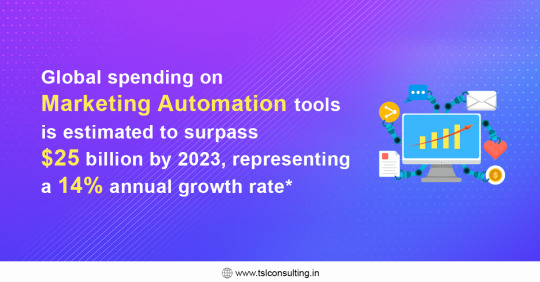
With the world embracing Hyperpersonalisation, marketers are left to assimilate, transform and incorporate a vast amount of data, content, and channels for the brand. To tackle the growing complexities of digital marketing, reduce overheads and time-to-market, businesses are turning to marketing automation tools to remedy chronic challenges. By integrating automation with AI, marketers are transforming their sales strategy to deliver rich consumer journeys through digital-first interactions. This future-ready partnership addresses everything from campaign management, segmentation, and targeting to omni-channel and geo-location marketing, resulting in increased engagement, higher conversions, and favorable ROI. To know more, reach out to us at TSL Consulting. [add website link]
*Source: https://www.forrester.com/blogs/global-marketing-automation-spending-will-reach-25-billion-by-2023/
2 notes
·
View notes
Text
Maximizing Workforce Efficiency: How VMS Platforms Empower Direct Sourcing

One of the most significant developments in this space is the rise of Vendor Management Systems (VMS), which enable organizations to streamline the management of their contingent workforce. Paired with the growing trend of Direct Sourcing, VMS platforms are revolutionizing how businesses acquire and manage talent.
Understanding Vendor Management Systems (VMS)
A VMS platform is a software solution designed to manage all aspects of an organization’s contingent workforce, from vendor relationships to temporary staff hiring, performance tracking, and payment. It allows companies to centralize and automate processes that were traditionally handled manually or through various disparate systems. The benefits of a VMS platform include better visibility, improved cost control, enhanced compliance, and faster onboarding for contract workers.
The core function of a VMS is to manage third-party staffing vendors, but its utility has expanded as workforce management becomes more sophisticated. A modern VMS platform now also supports Direct Source strategies, enabling companies to build their own talent pools and reduce dependence on external staffing agencies.
Direct Sourcing: A Growing Trend
Direct Sourcing refers to the practice of directly hiring contingent workers from a company’s existing network or talent pool, rather than through external staffing vendors. This approach allows businesses to tap into a pre-vetted group of freelancers, contractors, and temporary workers without incurring the additional costs and markups associated with staffing agencies.
The benefits of Direct Sourcing are clear:
Cost Savings: By cutting out the middleman, companies can save on recruitment fees and vendor markups.
Faster Hiring: Companies with established talent pools can quickly access qualified candidates, reducing the time-to-hire.
Better Quality Control: Organizations have more control over the recruitment process and can ensure that they are hiring workers who align with their specific needs and culture.
How a VMS Platform Enhances Direct Sourcing
While Direct Sourcing provides significant advantages, it requires a strategic and organized approach to managing talent. This is where VMS platforms come in. By integrating Direct Sourcing capabilities into their VMS, companies can optimize the recruitment and management of contingent workers. Here’s how:
Building and Managing Talent Pools: VMS platforms allow companies to create and maintain internal talent pools, consisting of previous contractors, freelancers, and referrals. These workers are often already familiar with the company’s processes and culture, making them ideal candidates for future projects.
Seamless Integration with Workforce Management: A modern VMS platform integrates with HR, procurement, and finance systems, creating a seamless experience for hiring and managing contingent workers.
Automated Workflows: A key advantage of a VMS platform is the automation of recruitment workflows.
Compliance and Risk Management: Hiring contingent workers, particularly across multiple jurisdictions, introduces a range of legal and compliance risks.
Data-Driven Decision Making: VMS platforms provide real-time analytics and reporting, giving companies valuable insights into their contingent workforce.
The Future of VMS and Direct Sourcing
As the contingent workforce continues to grow, the combination of Vendor Management System platforms and Direct Sourcing will become even more integral to workforce management strategies. Emerging technologies such as Artificial Intelligence (AI) and Machine Learning (ML) will further enhance VMS capabilities, enabling predictive workforce planning, talent matching, and real-time decision-making.
Conclusion
The integration of VMS platforms and Direct Sourcing is transforming how businesses manage their contingent workforce. By centralizing and automating key processes, VMS platforms empower organizations to take control of their talent acquisition strategies, reducing costs, improving efficiency, and ensuring compliance. As Direct Sourcing continues to gain popularity, businesses that effectively leverage their VMS will be well-positioned to stay competitive and responsive to changing market demands. The future of workforce management is one where agility and efficiency go hand in hand, and VMS platforms are at the heart of this transformation.
[REVEALED]: 7 Questions You Must Ask In 2024 Before Investing in a VMS
Top 6 Reasons Why You Should Absolutely Invest in a VMS
What is the Importance of Credentialing in Healthcare?
#b2bmarketing#b2b services#business#hr software#success#vms#vendors#technology#directsourcing#recruiting solutions#compliance#talentacquisition#contractors#applicant tracking system#management#workforce#contractmanagement#vendor company#best vendor replica yupoo#automation#usa#hr solutions#vendor management solutions#vendor management software#contingentworkforce#vendor management tools#vendormanagement#procurement#ai#job interview
0 notes
Text

Revolutionize Your B2B Lead Generation with These Innovative Strategies
Discover new rules of B2B lead generation and grow your business with personalization, AI, content marketing, and more.
B2B lead generation has evolved significantly in recent years, and companies need to stay up-to-date with the latest trends and strategies to remain competitive. In this article, we'll explore some of the new rules of B2B lead generation that can help you generate high-quality leads and grow your business.
Focus on Personalization: Today's buyers expect a personalized experience, and B2B companies need to deliver tailored solutions that meet their needs. By segmenting your audience, using targeted messaging, and leveraging data analytics, you can create highly personalized campaigns that resonate with your audience.
Embrace Social Selling: Social selling is a powerful way to engage with potential leads and build relationships. By using social media platforms like LinkedIn to share relevant content, engage with users, and showcase your expertise, you can establish your brand as a thought leader and build trust with your audience.
Leverage AI and Automation: AI and automation are transforming the way B2B companies generate leads. By using chatbots, email automation, and predictive analytics, you can streamline your lead generation process and deliver highly personalized campaigns at scale.
Prioritize Content Marketing: Content marketing remains one of the most effective ways to generate leads, but it's important to focus on quality over quantity. By creating valuable, informative content that addresses your audience's pain points and using a variety of formats like video and interactive content, you can capture leads and build trust with your audience.
Emphasize the Customer Experience: Today's buyers want a seamless, frictionless experience, and B2B companies need to prioritize the customer journey. By using tools like customer feedback surveys and customer journey mapping, you can optimize the customer experience and improve retention rates.
In conclusion, B2B lead generation is evolving rapidly, and companies need to adapt to stay competitive. By focusing on personalization, social selling, AI and automation, content marketing, and the customer experience, you can generate high-quality leads and grow your business in the digital age.
#promilo#b2b#b2bmarketing#b2bleadgeneration#b2bleads#b2bsaas#b2bsales#b2bgrowth#b2bcontent#b2bcontentmarketing#b2bmarketingstrategy#b2bdata#b2bstrategy
1 note
·
View note